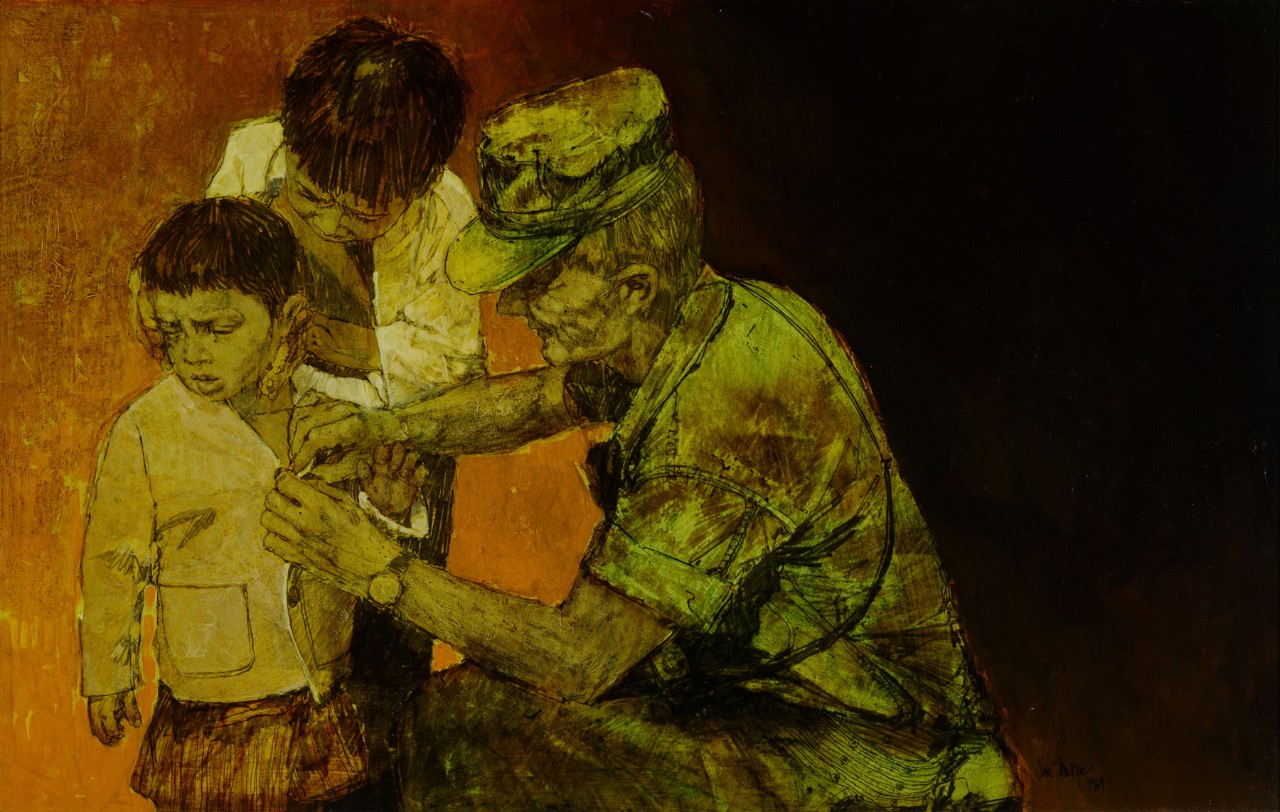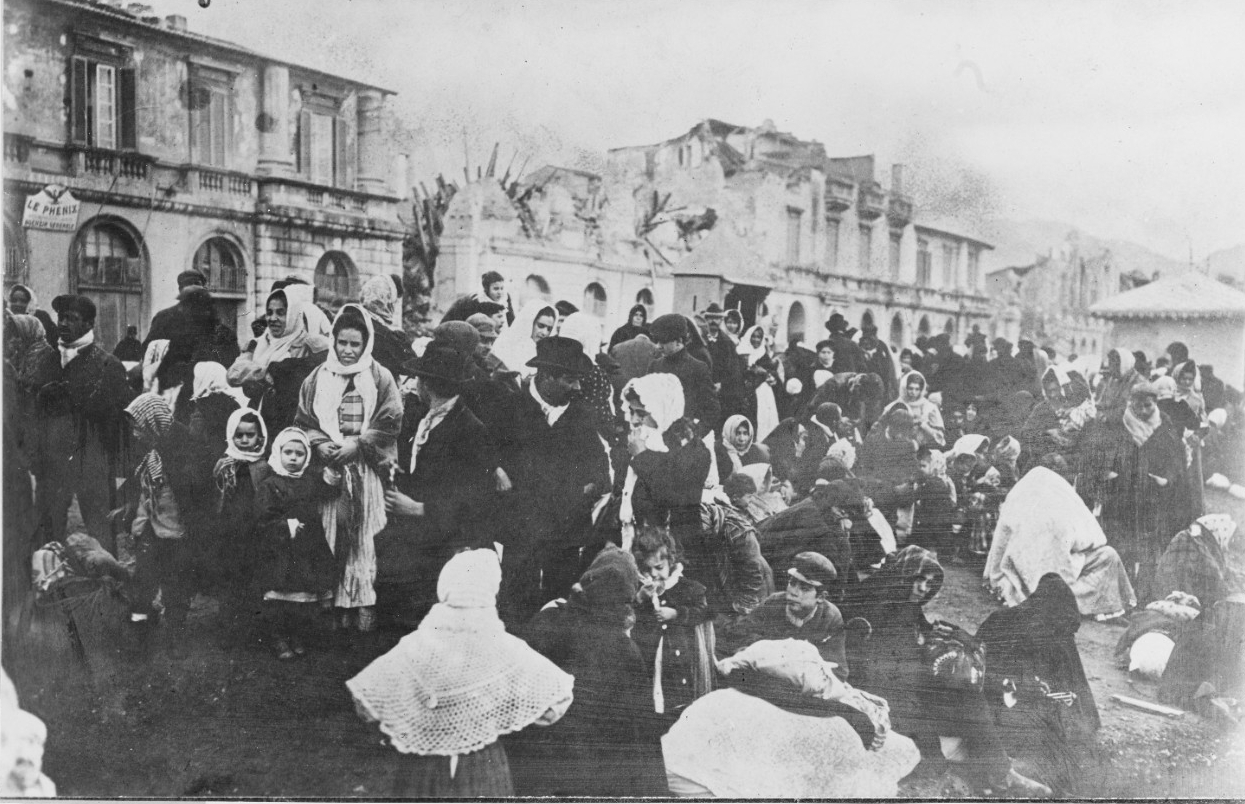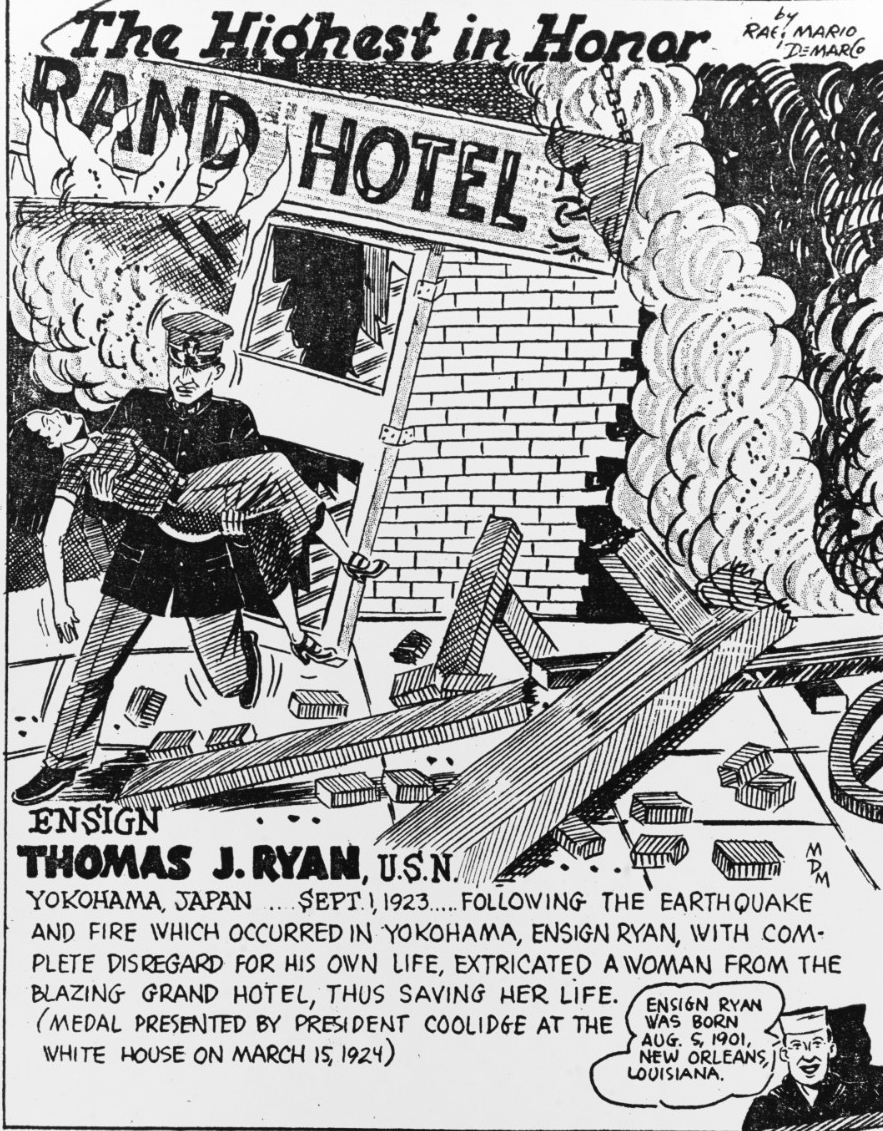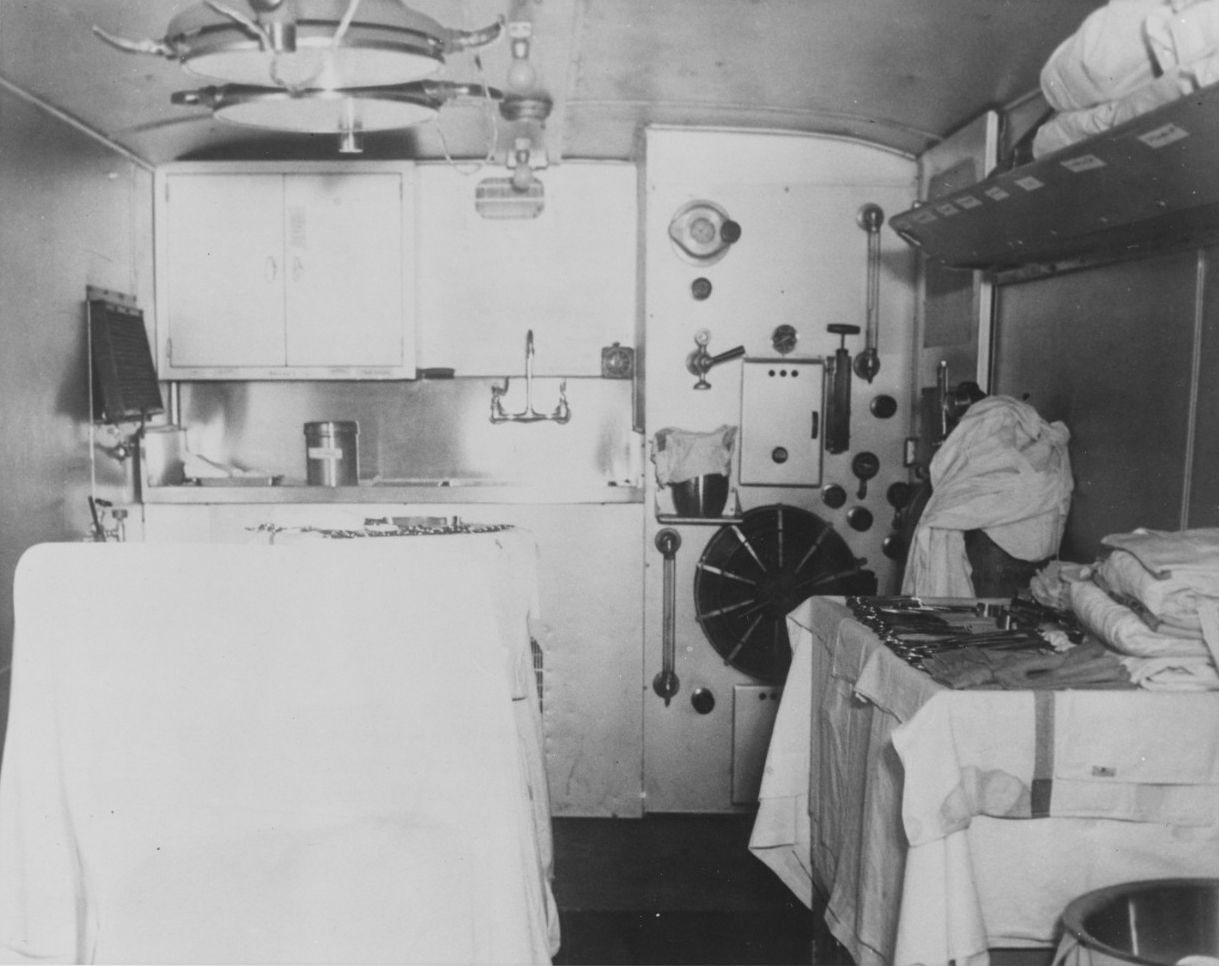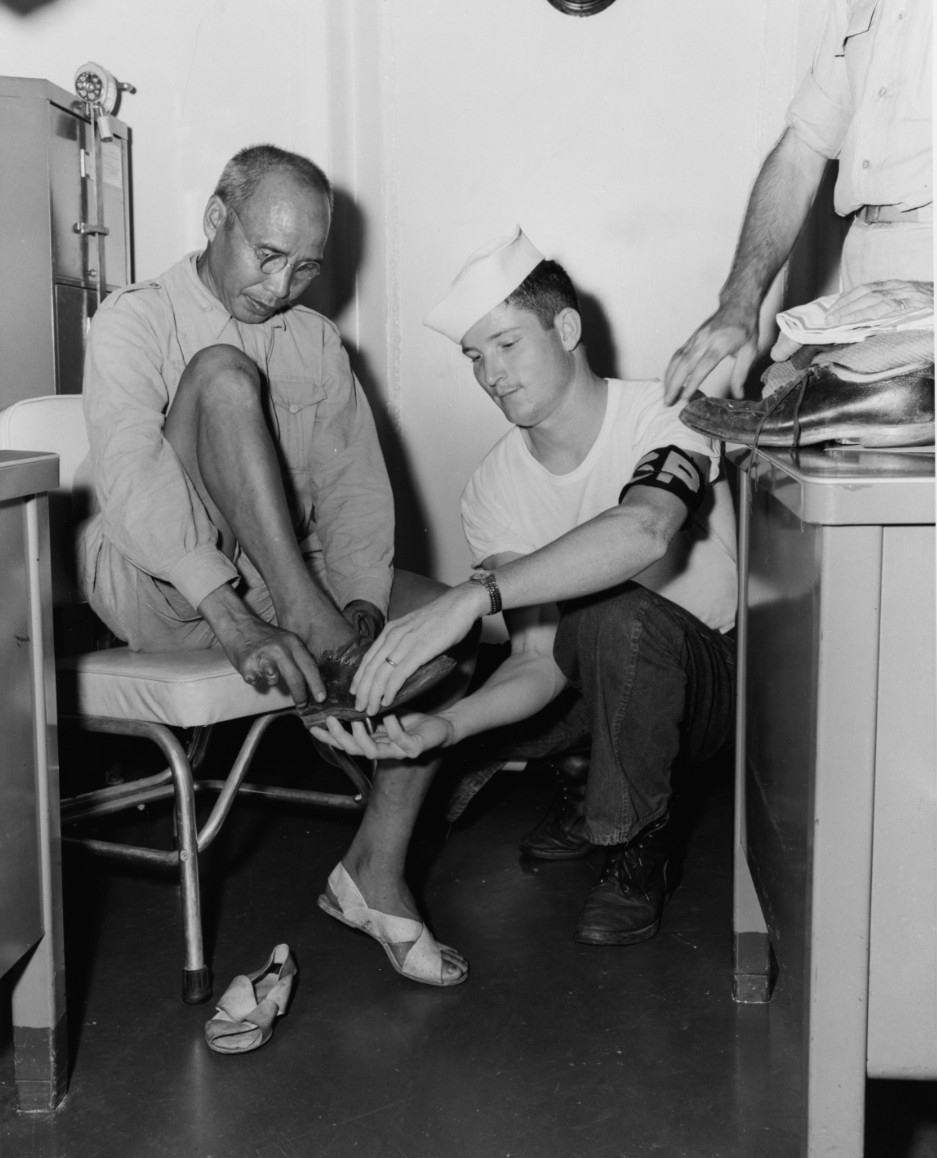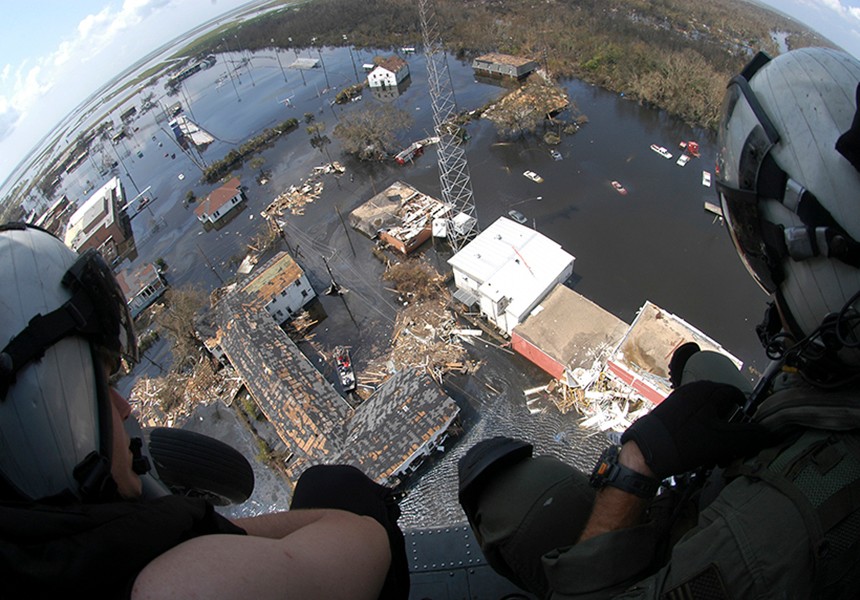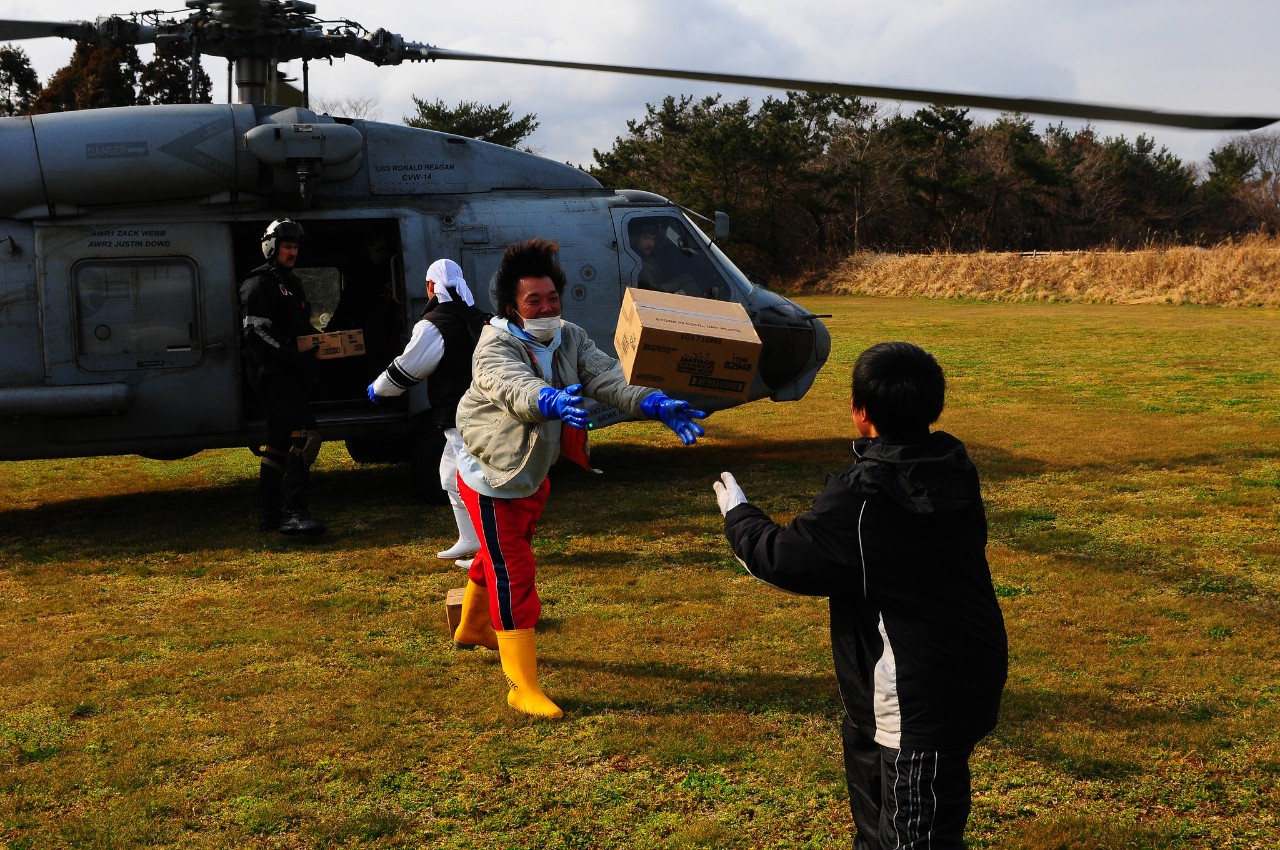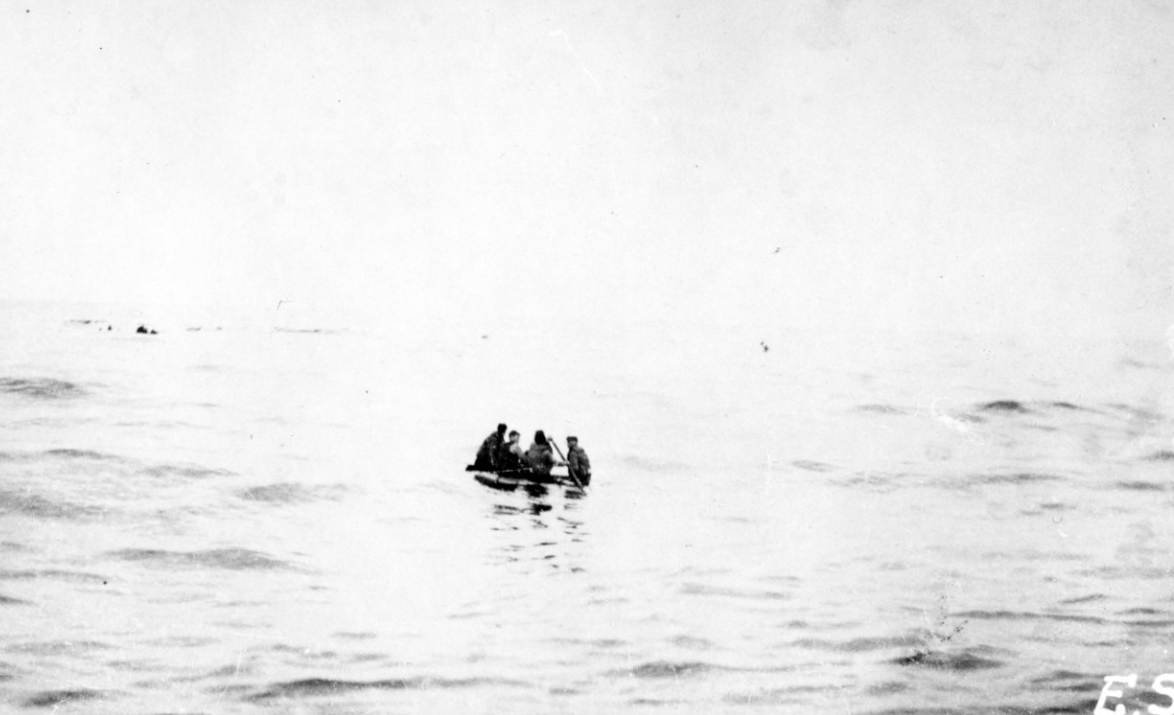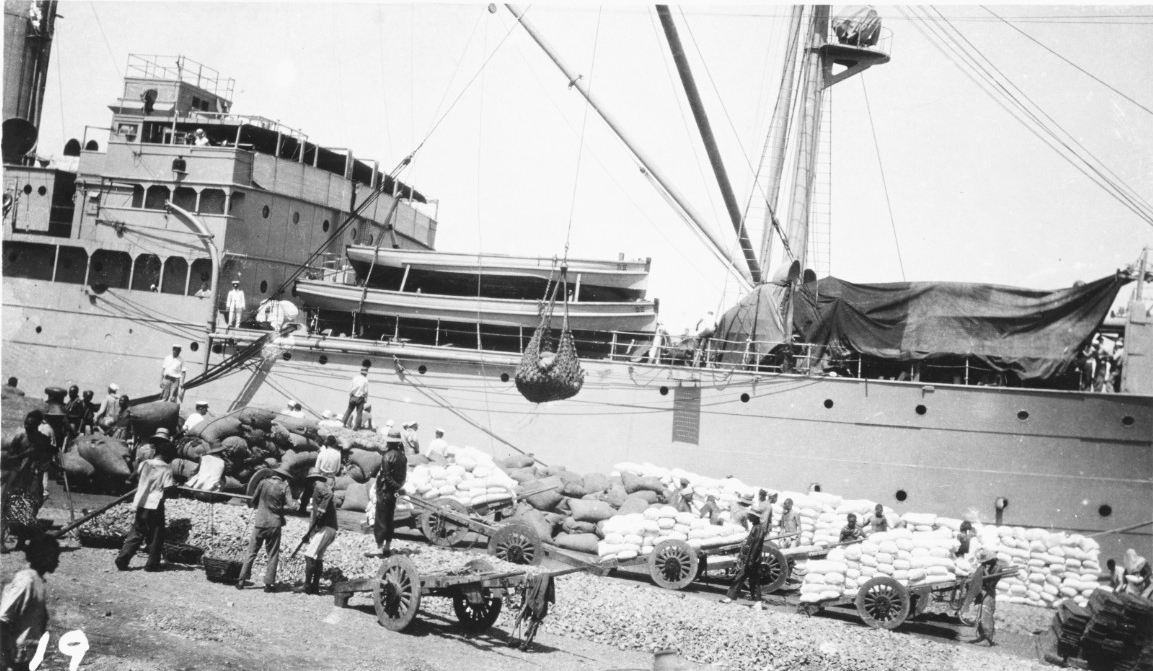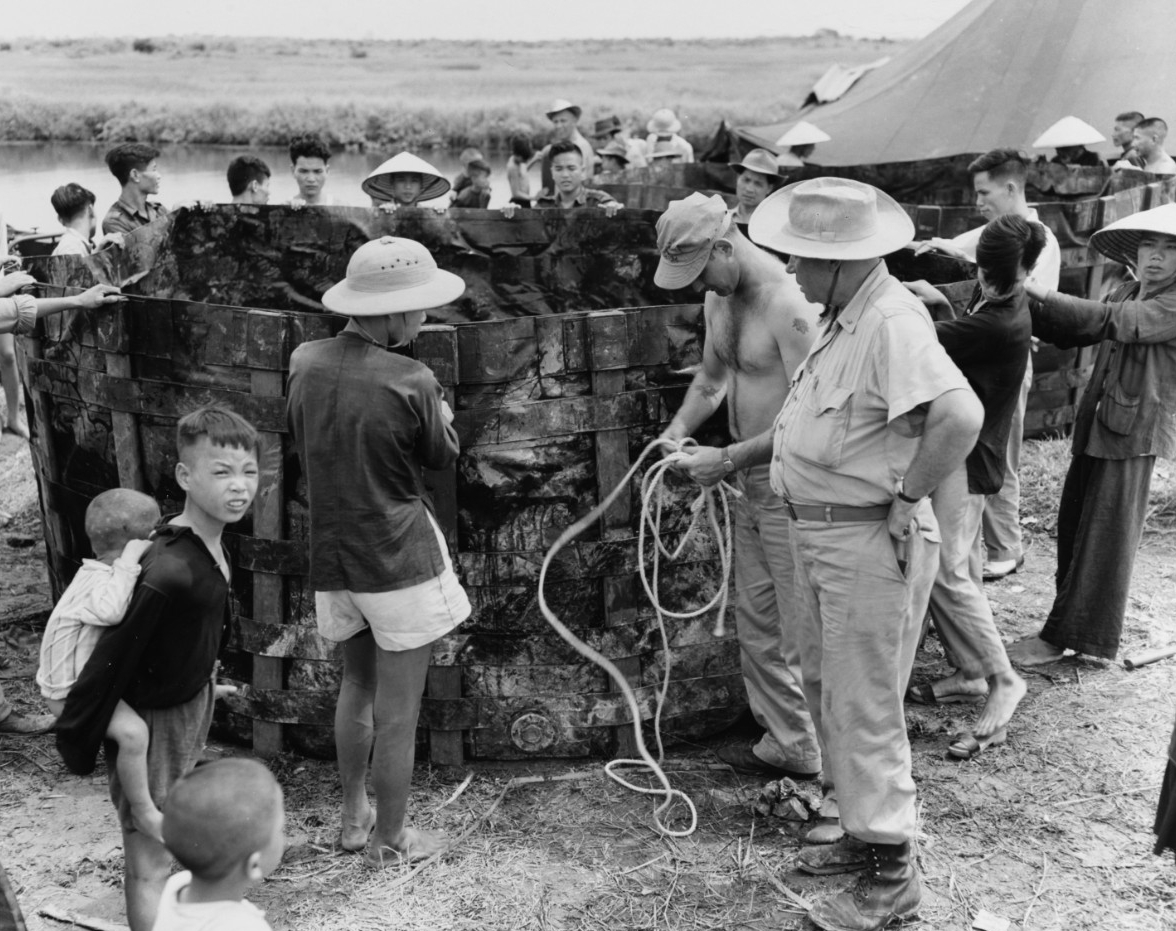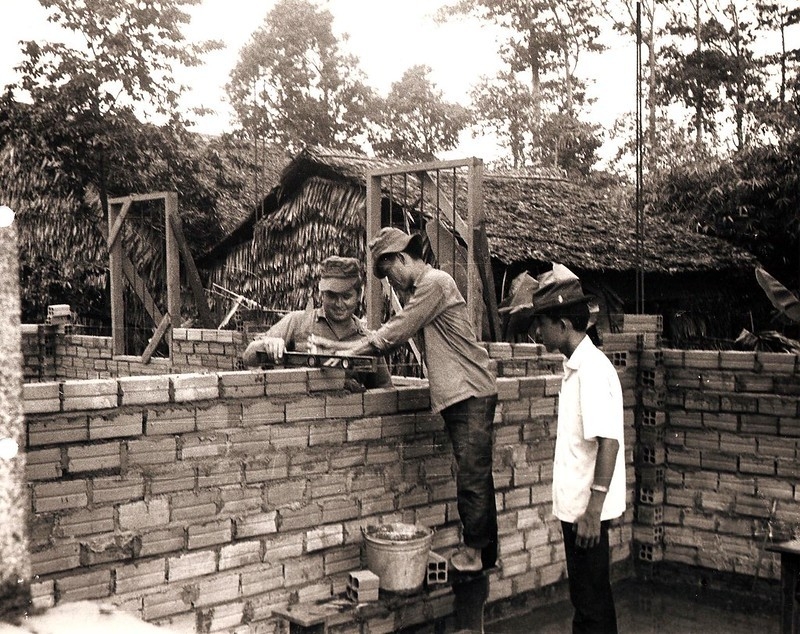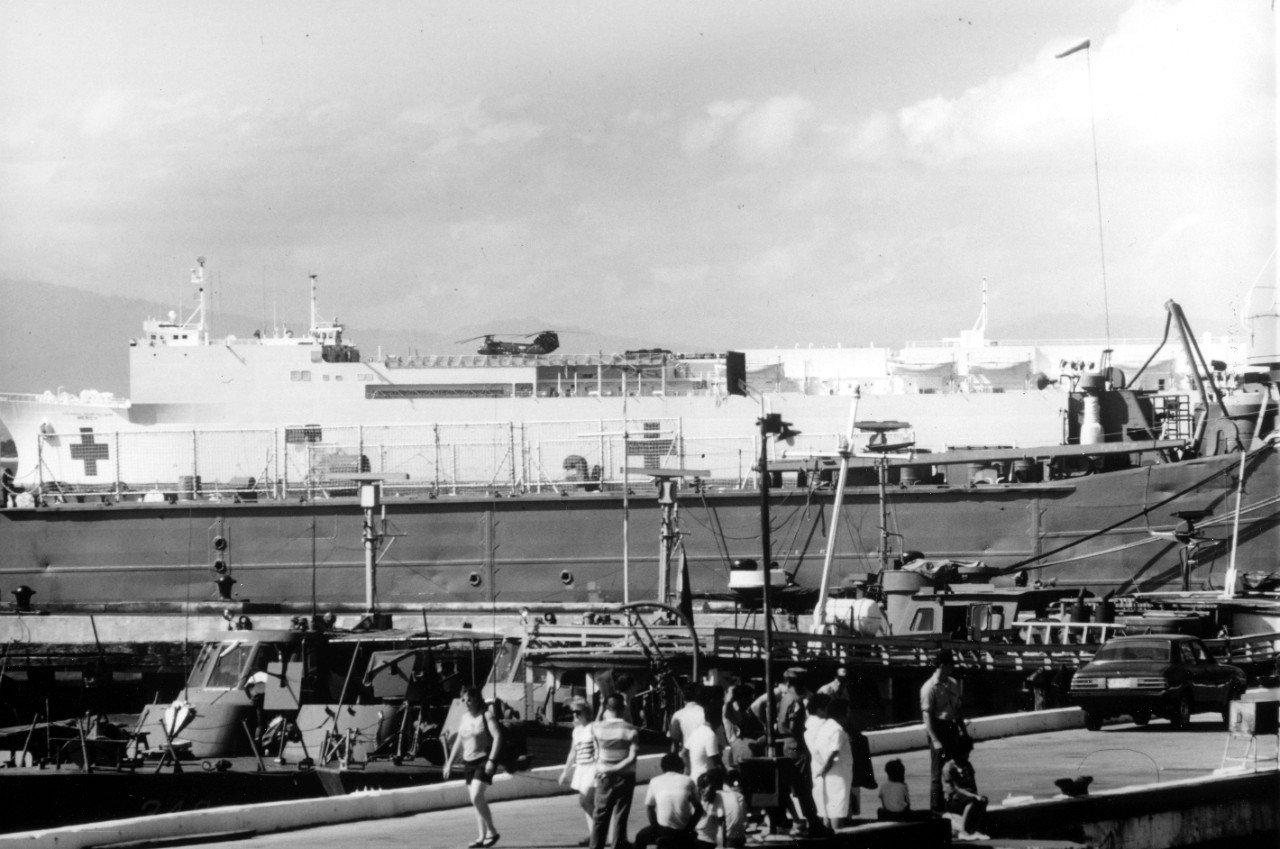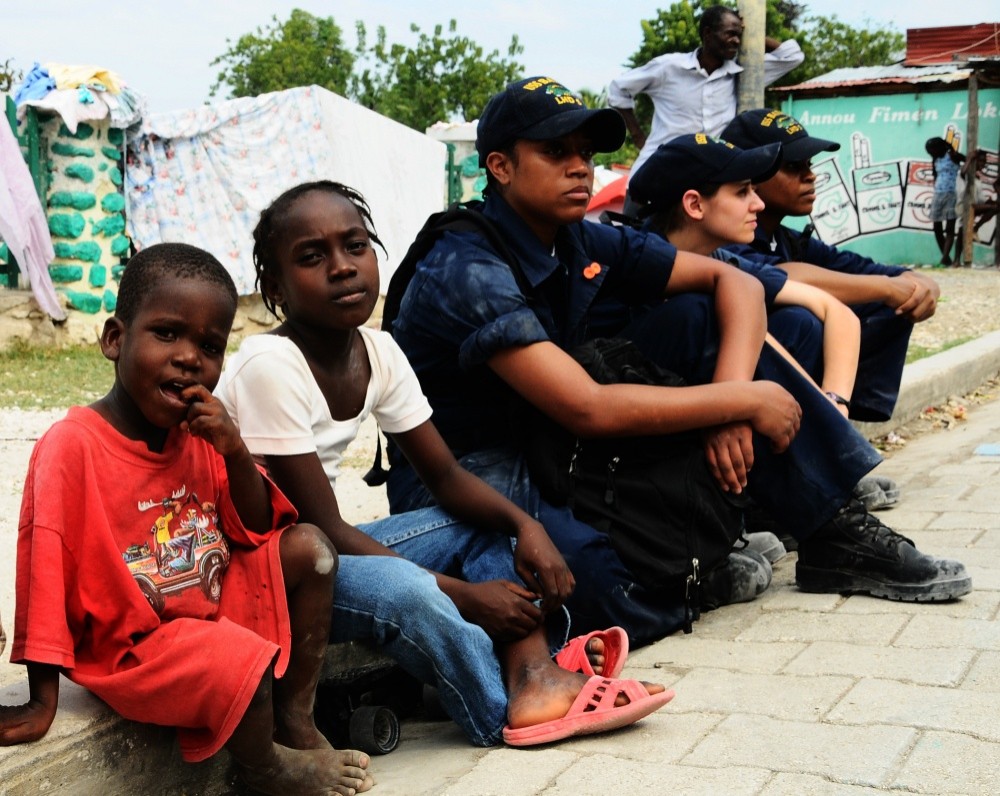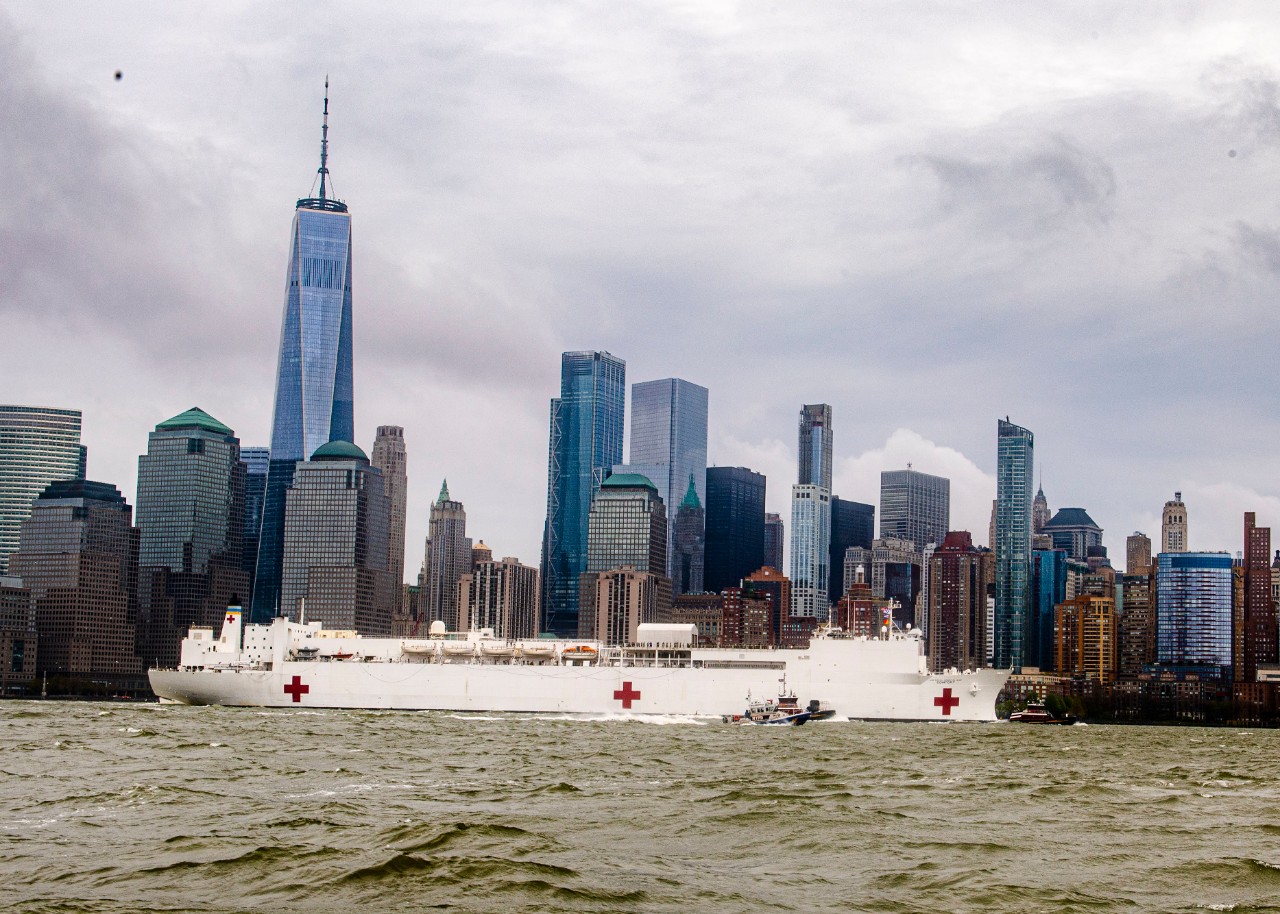The Navy’s Humanitarian Mission
Wherever naval units were stationed in Vietnam, they instituted programs to assist the civilian population and gain their support for the allied cause. Such assistance included medical care, instruction in hygiene and sanitation, distribution of clothing, medicine, and other supplies. Painting by Jim Sharpe (88-162-SE).
Although the U.S. Navy is best known as the world’s premier naval fighting force, U.S. naval forces perform a wide range of humanitarian operations. These operations include disaster relief (hurricanes, earthquakes, etc.), rescues at sea, refugee assistance, emergency medical deployments, nation building activities (food or construction), and so forth.
The Navy has a long history of providing assistance to both domestic and foreign governments. On 1 September 1923, a 9.0 magnitude earthquake, known as the Great Kanto Earthquake, hit Japan killing thousands of people, and sweeping away entire cities in the subsequent tsunami. At the time, the natural disaster was considered the worst ever to occur. President Calvin Coolidge took the lead in rallying support for the Japanese nation. “An overwhelming disaster has overtaken the people of the friendly nation of Japan,” he declared on 3 September. “The cities of Tokyo and Yokohama, and surrounding towns and villages, have been largely if not completely destroyed by earthquake, fire and flood, with a resultant appalling loss of life and destitution and distress, requiring measures of urgent relief.” The Navy and the American Red Cross provided unprecedented support to the citizens of Japan in wake of the disaster. In addition, a national relief drive raised nearly $12 million for the victims. The tragedy also prompted countless acts of heroism. For instance, Ensign Thomas Ryan received the Medal of Honor for rescuing a woman trapped inside the Grand Hotel in Yokohama, who had two broken legs and was trapped under ruble.
Prior to the Vietnam War in 1954–1955, Operation Passage to Freedom was initiated to assist in the transportation of hundreds of thousands Vietnamese civilians, soldiers, and non-Vietnamese members of the French army from communist North Vietnam to South Vietnam. The Navy formed Task Force 90 (TF-90), which included a detachment of Seabees from Amphibious Construction Battalion (ACB) 1. The Seabees mission “was to install and operate…pontoon piers on the Do San Peninsula (approximately 15 miles south of Haiphong).” The piers were to be used as additional docking space to accommodate the transportation of the refugees. Although the French government ultimately halted the building of the piers due to the presence of a foreign military in Vietnam, the Seabees were still instrumental in the building of camps to accommodate the thousands of refugees. Ships off shore provided most of the support for the operation.
In 2004, USS Abraham Lincoln (CVN-72) departed Hong Kong in response to a powerful earthquake and tsunami that devastated Southeast Asia killing more than 250,000 people. During Operation Unified Assistance, U.S. forces airlifted on a daily basis an average of 522,000 pounds of food, water, and other critical supplies during the 47-day operation. Six years later, USS Carl Vinson (CVN-70), six amphibious vessels, and more than a dozen escorts responded to the 2010 Haiti earthquake that leveled the capital city Port-au-Prince. Operation Unified Response provided critical relief to various locations throughout the country by airdropping supplies to the Haitian citizens. The operation also established field hospitals, flew out evacuees, and provided medical assistance with the deployment of USNS Comfort (T-AH-20). U.S. Marines provided assistance with the deployment of the 22nd and 24th Marine Expeditionary Units. The operation was complete on 24 March.
Domestically, in the aftermath of the devastating Hurricane Katrina in 2005, the Iwo Jima Amphibious Ready Group, with elements of the 24th Marine Expeditionary Unit, rapidly deployed to the Mississippi coast. “Our service men and women were selfless and caring to all, and we showed our citizens the compassionate side of human nature throughout the region,” wrote retired Rear Adm. Sinclair M. Harris, who commanded the amphibious ready group during the operation. “Many commented to me that now that they saw us, they knew America cared. I expected my Sailors and Marines to find the good and do it.” In 2017, Hurricanes Harvey, Irma, and Maria highlighted the Navy’s continued commitment to support civil authorities during natural disasters. In 2020, hospital ships Mercy and Comfort deployed to Los Angeles and New York, respectively, to assist the country’s two largest cities during the COVID-19 pandemic.
Read more in NHHC Publications:
A Global Force for Good: Sea Services Humanitarian Operations in the Twenty-First Century by John Darrell Sherwood (2023).
Available for free in the following format: 508-compliant PDF (12 MB)
*****
Suggested Reading
- A Sampling of U.S. Naval Humanitarian Operations
- U.S. Navy Relief Efforts after the Indian Ocean Tsunami, 26 December 2004
- Reports of USS Powhatan and USS Wateree concerning the earthquake and tidal wave of 13 August 1868 at Arica, Peru
- United States Naval Hospital Ships
- Post-War I: Humanitarian Aid and Relief
- Tsunami (Tidal Wave) Disasters and the U.S. Navy
- Injury and Destruction of Vessels by Earthquakes, Report of the Secretary of the Navy, December 1868
- The Great Flu Crisis at Mare Island Navy Yard, and Vallejo, California
- Diving Log of Rescue Operations
- Report of Rescue Operations
- USS Kearsarge Rescues Four Soviet Soldiers Adrift in Pacific Ocean for 49 Days
- H-019-2: Medal of Honor for LTJG Clyde Lassen
- Answering a Call in a Crisis—Dominican Republic Intervention, 1965
- Peacekeeping and Related Stability Operations: Issues of U.S. Military Involvement
- Navy Medicine
- Fact Sheet: Hospital Ships T-AH
- 21st Century: Humanitarian Actions
Blogs
- Answering the Call: Stateside Deployments of U.S. Navy Hospital Ships
- Remembering the U.S. Navy’s Iranian Evacuation of 1979
- Operation Tomodachi: Partnerships, Presence, Readiness and Heritage
- Remembering USS Relief (AH-1), The Navy’s Floating Fortress of Health
- Find the Good and Do It: the Navy’s Response to Hurricane Katrina
- Great White Fleet Assists Following Messina Earthquake
Artifacts
Notable U.S. Navy Hospital Ships
Selected Imagery
Search and Rescue (SAR) swimmers assigned to Helicopter Sea Combat Squadron Two Eight (HSC-28), watch a rescue unfold from their MH-60S Seahawk helicopter to see if their assistance will be needed along the coast of Louisiana, 31 August 2005. USS Bataan (LHD-5) was participating in humanitarian assistance operations led by the Department of Defense, in conjunction with the Federal Emergency Management Agency (FEMA). U.S. Navy photo by Photographer’s Mate Airman Jeremy L. Grisham.
Japanese citizens unload humanitarian assistance supplies from an SH-60F Sea Hawk helicopter assigned to the Black Knights of Helicopter Anti-Submarine Squadron (HS) 4 embarked aboard the aircraft carrier USS Ronald Reagan (CVN 76), at a landing zone in northern Japan, 22 March 2011. Ronald Reagan was off the northeastern coast of Japan conducting humanitarian assistance operations as part of Operation Tomodachi. U.S. Navy photo by Mass Communication Specialist 3rd Class Alexander Tidd.
Local village children sit next to Sailors of the multi-purpose amphibious assault ship USS Bataan (LHD-5) while taking a break from removing rubble and debris from roads in Grande Goave, Haiti. The Sailors were in Haiti supporting Operation Unified Response, providing military support capabilities to civil authorities to help stabilize and improve the situation in Haiti in the wake of the 7.0 magnitude earthquake that hit the area, 12 January 2010. U.S. Navy photo by Mass Communication Specialist 2nd Class Kelvin Edwards.

